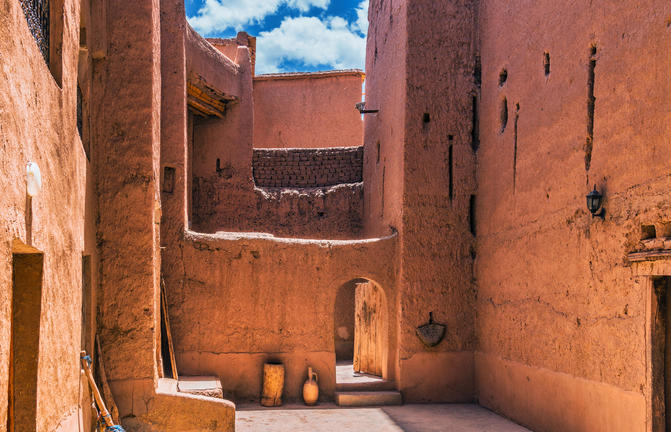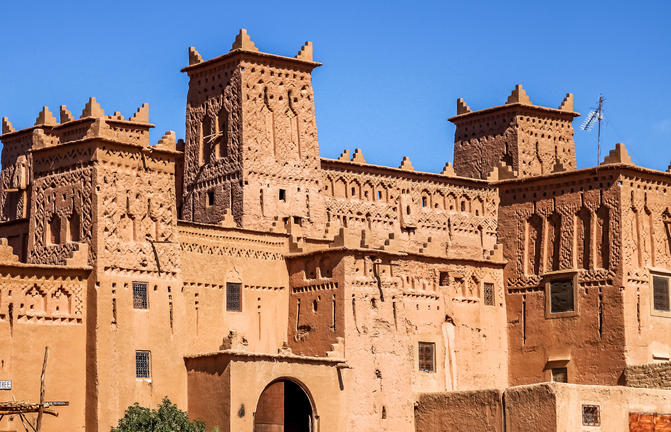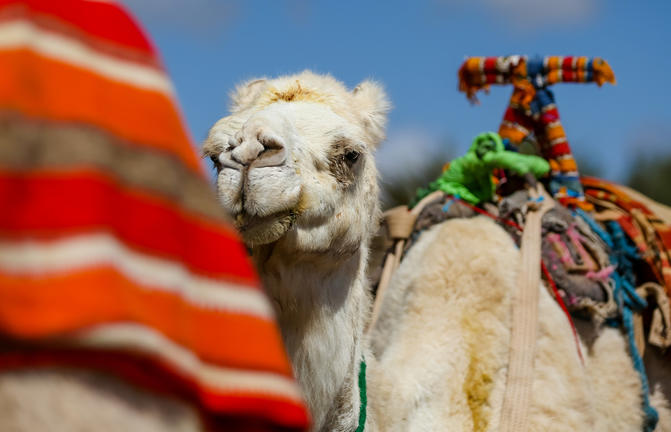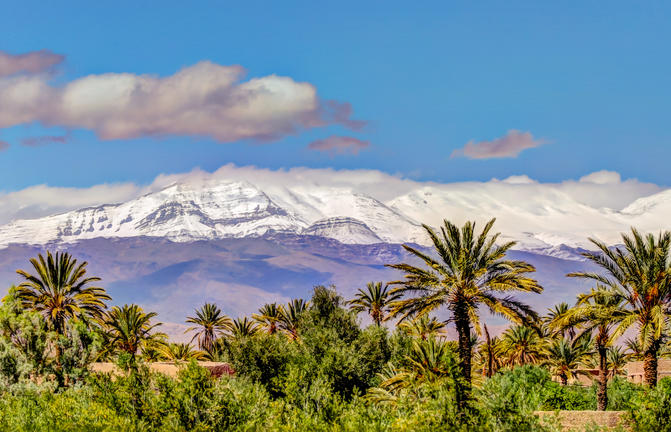





Casablanca lies on the Atlantic coast, in central-western Morocco. Fondly known by locals simply as ‘Casa', the capital is the industrial, economic and cultural heart of this remarkable country, as well as its most cosmopolitan, liberal, and progressive city. While most visitors overlook Casablanca in favour of Morocco’s more popular and exotic tourist areas, this sprawling metropolis has plenty to offer the discerning traveller and has many hidden historical and cultural gems just waiting to be discovered. The city is famous for its spectacular Art Deco and Moorish Revival architecture, constructed during the Colonial Period. Explore the Old Medina, a tiny, ancient, walled village; visit the impressive King Hassan II Mosque; discover the ornate rooms, masterfully tiled floors, and intricately carved wooden ceilings of the Hispanic-Moorish Mahkama du Pacha; or simply watch the world go by at one of the many ocean-view cafes along the waterfront boulevard.
Rabat and its twin city, Sale, overlook the Atlantic Ocean from their location at the mouth of the Bouregreg River. This enchanting city serves as Morocco’s capital and features fascinating Islamic and French-colonial architecture. With a rich historical and cultural heritage, a long coastline with beautiful rocky and sandy beaches, an ecologically diverse countryside, wonderful hiking trails and a vibrant city centre with lush, green parks, the city is a popular destination for travellers. Explore the city on foot, relax on the unspoilt beaches and visit the captivating 12th-century seaside kasbah of Udayas.
















Hidden high up in the Rif Mountains of northeastern Morocco, Chefchaouen is a relatively large historical town known for the striking, variously hued blue-washed buildings of its picturesque Medina. Visitors can look forward to wandering along narrow, cobblestone streets lined with leather and weaving workshops and an array of historical monuments. Must-see attractions include the town's exquisite waterfall; the ruins of an old mosque on a hill behind it; and the shady main square of Uta el Hammam, which is home to the red-walled casbah - a 15th-century fortress and dungeon displaying ethnographic and art exhibits. This charming town also serves as an ideal base for travellers eager to explore the traditional villages and dramatic mountains of the scenic surrounding area.
Morocco’s second-largest city and the country’s former capital, Fes (Fez) is an exotic mix of Arabic architecture, ancient alleyways calls to prayer and colourful markets; all mixed in with a good dose of modern culture. Home to the venerated Karaouine Mosque, which dates back to 859 AD and incorporates an Islamic university, and to the country’s most hallowed shrine, the Zaouia Moulay Idriss II; Fes is regarded as the spiritual seat of Morocco. Music lovers should try to synchronise their trips with the annual Festival of Sacred Music, one of the highlights of the city’s cultural calendar showcasing diverse performances of spiritual and religious music; while those with a penchant for shopping can browse the mesmerizing colourful markets selling an exquisite array of silver, leather and other handicrafts up for grabs.
















Situated in the vast desert region of Saharan Morocco, dividing Morocco and Algeria, Erg Chebbi is one of two Moroccan ‘ergs’, which are a sea of dunes. What it lacks in size - compared to the deserts of Algeria, Libya and Namibia - it makes up for in its extraordinarily scenic golden landscape, which changes colours dramatically at sunset. The dunes of Erg Chebbi span over 30 kilometres and rise up to 160 metres. From Merzouga, the tourist centre, take a camel trip into the wild; enjoy quad biking; or stay overnight in a desert oasis called a Moroccan bivouac.
The town of Skoura is a beautiful palm-grove-lined oasis, resting on the banks of the seasonal Amerhidl River in the Ouarzazate Province of Morocco (within the scenic Dades valley or ‘Valley of a Thousand Kasbahs’). This flourishing location takes in scenes of the enthralling Atlas Mountains and boasts a multitude of Moroccan castles, vibrant souks, and lush groves of palm, olive, fig, and almond trees. Visitors can look forward to a wide array of impressive sites including the Marabout Sidi M’Barek, a magnificent pre-Islamic Muslim shrine; and the 17th-century Amerhidl Kasbah, a high-walled crenellated fortress known to be one of the largest in Morocco. Other popular Kasbahs include the Dar Ait Sidi el-Mati Kasbah, as well as the spectacular Amar and Ait Ben Abou.




















Situated to the north of the foothills of the snow-capped Atlas Mountains and fringing the famed Sahara, the bustling UNESCO-listed city of Marrakech is an enchanting travel destination in Morocco. It’s easy to lose all sense of time in Marrakech, with its maze of narrow alleyways scattered with donkey carts, snake charmers, castanetists, acrobats, story-tellers, dancers, water-sellers and potion vendors to entertain. If you don’t find all of these as you journey through the winding streets of the ‘Red City’, you will be sure to find them and much, much more at its famous markets. Marrakech is home to the largest traditional Berber market in Morocco and one of the busiest squares in the world, known as Djemaa el Fna. Don’t miss the opportunity to visit this square in the evening as it transforms into an enormous, open-air restaurant.






